In today’s world, what is a traditional building?
Here is something about Eastern and Central Europe (the countries that used to lie behind the former Iron Curtain) that many of you may not know: most of the locals that you meet in the streets are no more intimate than you with their cities’ fantastic urban architecture, that splendid blend of medieval grandeur and Austro-Hungarian pomp.
Just like you, they will experience this architecture mainly from the outside, as the backdrop for a visit to the town centre, whilst living and going about their everyday business in completely different surroundings.
People from various Central European countries have told me on different occasions that “90 percent” of their fellow citizens lived in high-rise buildings on edge-of-town housing estates that were built during the post-war decades.
These tower blocks are not exactly pretty, nobody would want to claim that, but they are structurally sound and solidly built (although the internal sound insulation is generally very poor, something that all inhabitants complain about). The blocks are mostly six to ten storeys high and surrounded by anything from handsome municipal parks to scruffy grasslands. What they are decidedly NOT are US-style housing projects, dystopian war zones like Cabrini Green or Pruitt Igoe.
They accommodate a broad social mix, workers and professionals alike, and many of the flats are privately owned and owner-occupied. There is neither a popular wish nor an urgent need to tear them down. (At any rate, there is not enough money to replace them with something significantly better.)
These tower blocks have been around for decades, so most of the people that you will meet have grown up in them. What’s more, so have their parents, and, often enough, their grandparents are living in one of those, too.
What, one may wonder, counts as a traditional home under these circumstances?
How the Log Cabin Penthouse of Kosice Came About
“For many people in my home country of Slovakia, nothing but a log cabin would do”, smiles the artist Tomas Dzadon. “And that includes people from my own generation” – Dzadon was born in 1981 – “who practically do not know anybody who has not grown up in a housing estate. It is this concept of tradition that I wanted to question and challenge.”
Which is why Dzadon – as part of an art project for Kosice’s European Capital of Culture Exhibition in 2013 – bought three barns from Central Slovakia, put them on steel foundations and had them lifted by crane to the top of a tower block in Kosice.
This is the short version of the story. In the longer one, it took Dzadon two years to prepare the project – to find the right barns, to arrange for their transport and, most difficult of all, to find a housing association that was willing to provide him with a “rooftop gallery” for his exhibition.
After all, the barns – including their steel foundations – weighed 42 tons, and all the owners that Drazdon had contacted ultimately shied away from taking the risk. As a last shot, the artist booked an ad in the local newspaper – “I had been looking for the perfect spot for well over a year”, he recalls, “but finally, it was not so much that I found the perfect location but that the perfect location found me.”
The lifting of the barns to the top of their new home was, in the end, the easiest bit of the entire operation – and by far the shortest, too: it took Drazdon and his helpers only a single day.
This is a picture from 2013. The rooftop installation was, initially at least, not universally popular among the citizens of Kosice. “Some people called it a mockery of Slovak values”, Dzadon remembers with a wry smile. But most people got used to it over time, and Bohuslav Stolfa, Chairman of the building’s owners’ association, positively beamed with pride when he gave us a personal guided tour of the site.
This was a specially arranged visit, so most visitors, unfortunately, will have to content themselves with a view of the Log Cabin Penthouse of Kosice from below. Even then, the installation is well worth the trip. The building is located on Lidicke Namestie 1 in the suburb of Dargovských Hrdinov (locally dubbed the furcia or “mountain range”), but is best seen from the main road, Ludvicka Svobodu.
Take bus no. 15 or tram line 71 / 72 from Kosice city centre and alight at Poliklinika Východ.
Admittedly, there was not much walking involved in today’s post – in theory, you could also make your way from Kosice town centre on foot: Dargovských Hrdinov is only about 2 km away, but I would not necessarily recommend that since the route (we went there by car) is not exactly what you would call scenic.
I will make up for that lack of physical exercise in our next post when we take a longer walk to explore more modern art in Kosice!
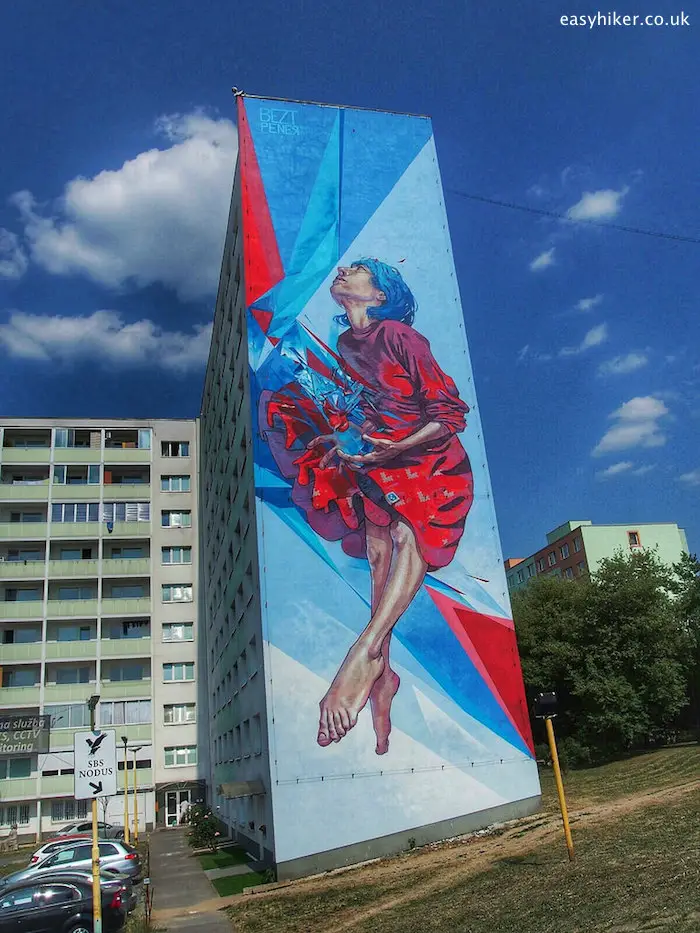

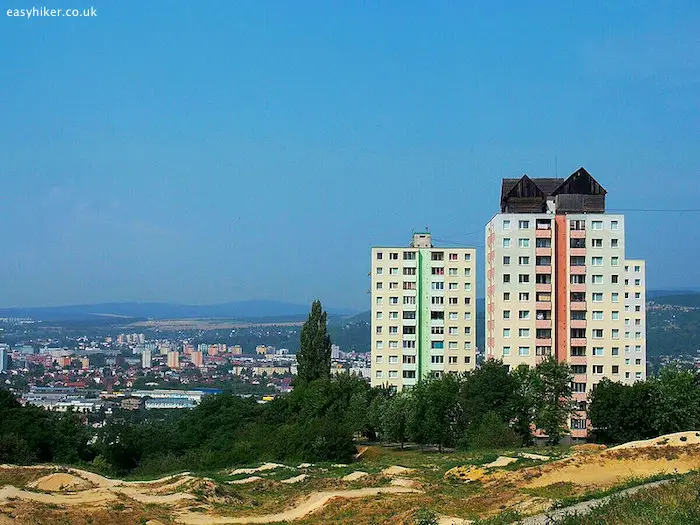
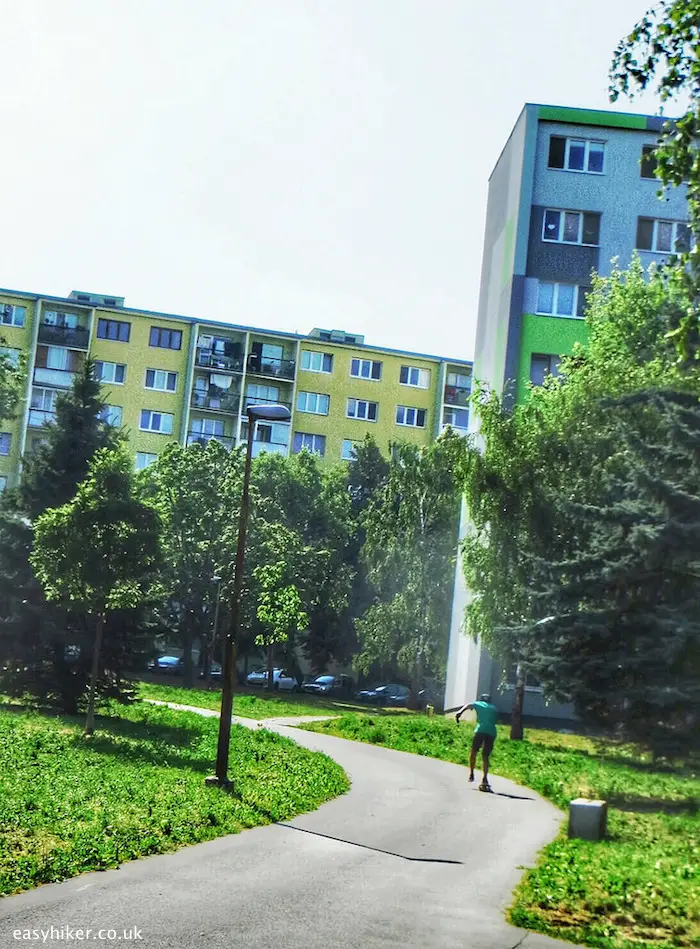
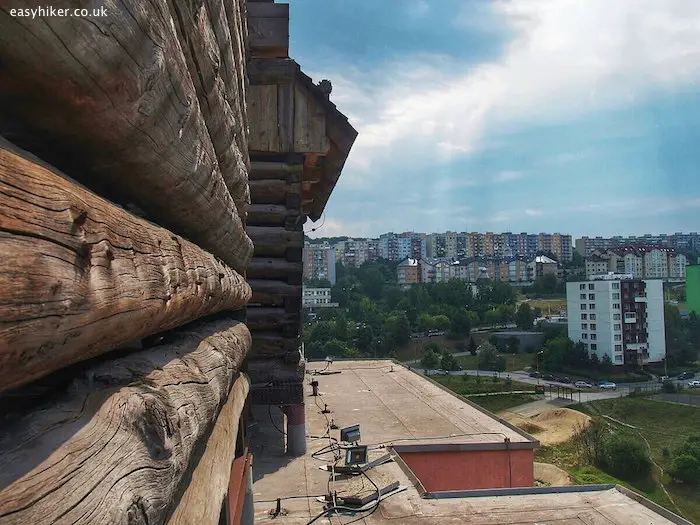
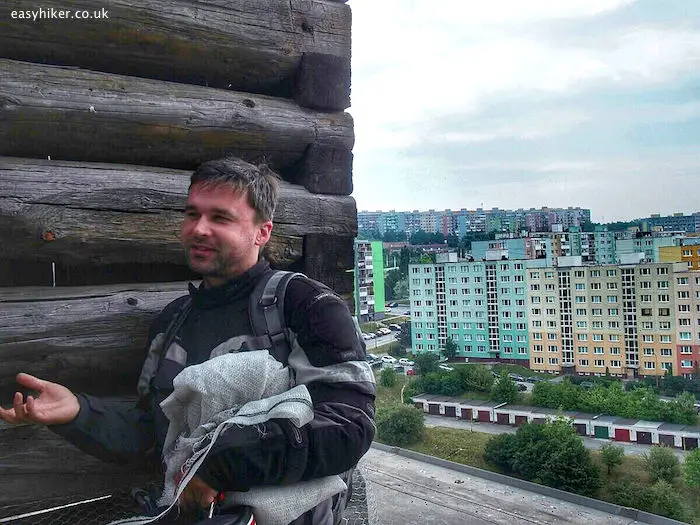
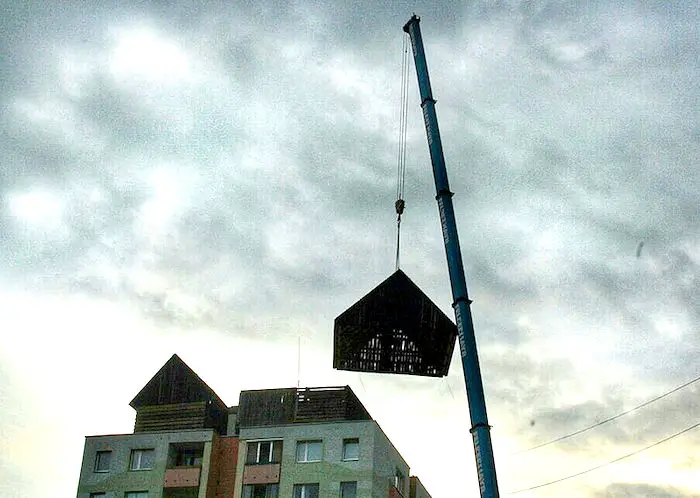
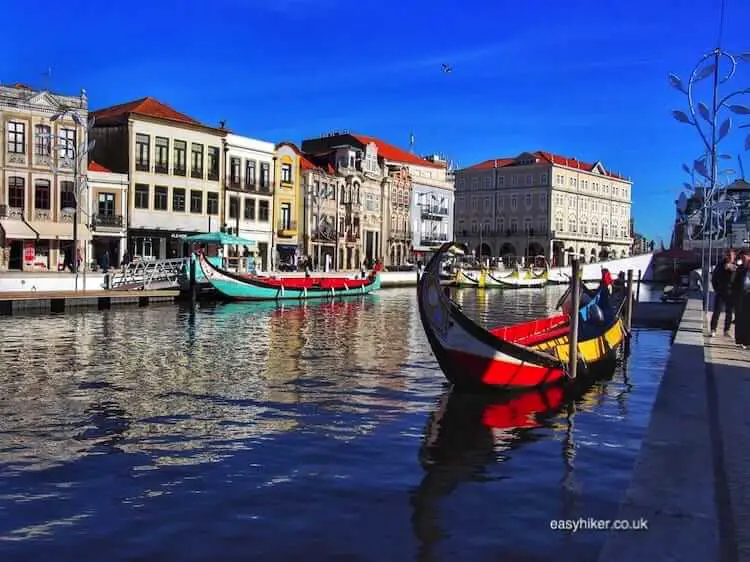
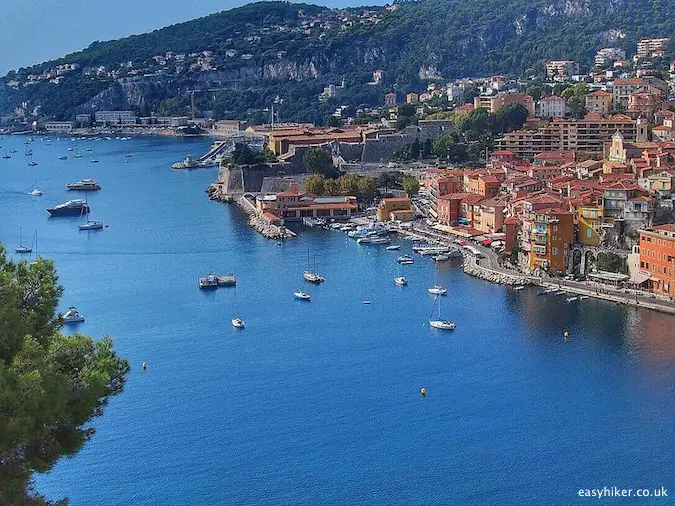
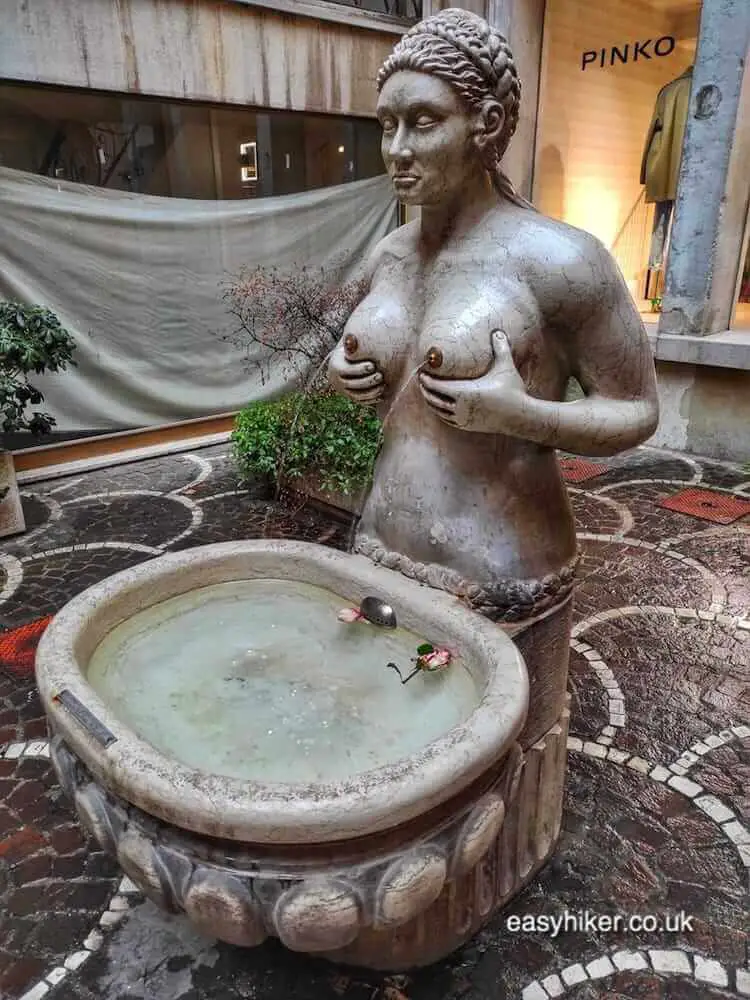
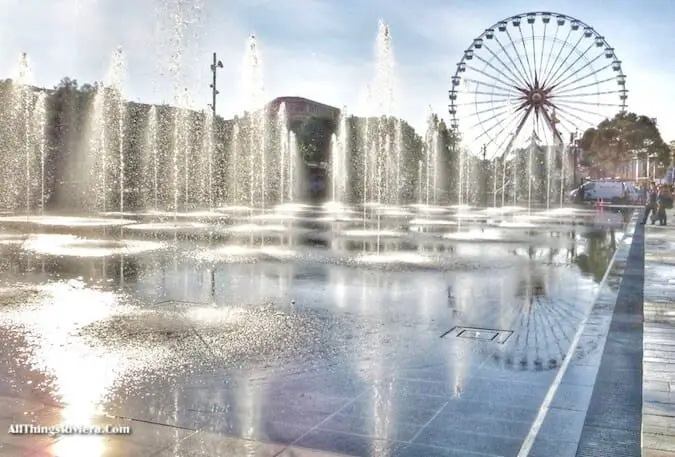
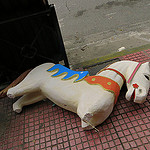
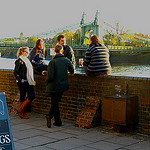
We loved our first visit to Slovakia in Kosice. We hope to be able to go back and perhaps follow your tip, Martin.
I understand why you felt that way about the log cabins, Kris. But now, it’s making the city of Kosice famous worldwide!
Regarding the “blocks” of flats – housing block is convenient – there are usually good infrastructure, housing is clean, maintained, one need not worry about the roof, sewage pipes, water, heating, etc.. Of course, even here there are apartments with higher and lower standards.
Regarding the log cabins – I did not like it at all, I did not understand why someone throwing away money because of such stupidity, but when I see how appeal to tourists, gradually I change opinion :)
:)))) My sweet country :)))) beautiful monument :D
I’ll give you a tip, visit Banska Bystrica
mrtn
Agata, that was basically what we thought of about living in these East European buildings, having seen how it was in former East Germany. But it seems, the young generation of Kosice (at least those we’ve spoken to) didn’t seem to have such a bad time in there, except for their complaints about how thin the walls were that they could practically hear what’s going on inside your neighbours’ (above, below and on each side) flats.
It is, Jeff. The younger generation should learn to appreciate what it was like in their fathers’ and grandfathers’ time for a better perspective of the future.
Love the fact that traditions are being preserved for future generations!!
Oh dear! I’m so familiar with these ‘blocks’ as we normally called them. I lived in such building for almost 30 years and it is horrible. Not only it is ugly and uninspiring but also for the reason of social mix – it does not work. In Poland very poor people were given the apartments but they tended to behave like they still lived in a village (i.e. throwing food out of the windows etc.), making the whole district looking terrible. Next door we had a family of an alcoholic with 7 kids and it was a very very loud neighbourhood. There was nothing we could do about it for years, apart of leaving. Nowadays, people who still live in these structures are being threatened that the buildings were supposed to stand for about 35 years and they will soon collapse. In Poland, they were not built in a solid way, they are not efficient and what’s the worst about is they are still run by so called housing association which takes away a lot of money from the residents to cover their messy and stupid way of managing.
All in all, living in this place make lives of most of the people miserable. I hated it.
it is, Marcia. But the buildings are sturdily built, obviously.
Goodness, those are some heavy barns and some pretty sturdy rooftops. Where there’s a will, there’s a way!
It is a very cool concept and this one is very unique, Anne Sophie.
We Vikings know all about log cabins. Very cool that they’re reviving an old tradition in such an unusual and creative way.